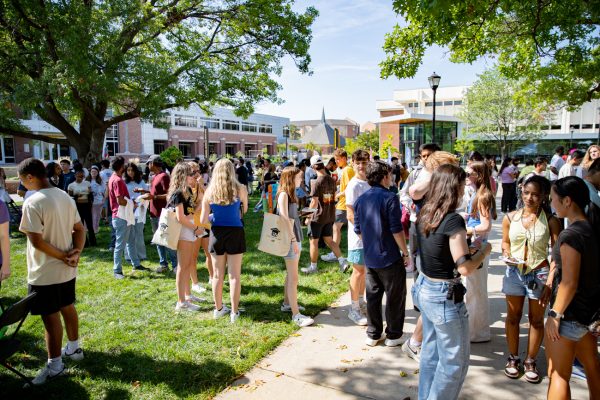Research shows pedestrians lack visibility based on clothing color, not driver distraction
While zooming and looping through the street in the pitch-black of night, Alex Chaparro notices a figure in the distance.
At first glance, a person would assume it’s a sign or possibly wildlife.
The car screeches to a halt, nearly missing a pedestrian.
While conducting research to study different clothing pedestrians wear and the effects it has on visibility to a distracted driver, researcher and professor in the psychology department, Chaparro experienced a similar situation.
“Imagine the news,” he said. “‘Investigators researching pedestrian visibility at nighttime, struck pedestrian.’ It was very ironic, but it really reinforced to me the relevance of our work and how hard it is to see another person on the road even if you are looking out for them.”
A lack of previous research inspired Colton Turner, a first-year graduate student in human factors psychology, to work alongside Chaparro in a study to find out what affects pedestrian visibility.
The research took place at the Kansas Law Enforcement Training course in Hutchinson. The participants were passengers in a car as it drove around the course. They were asked to remain focused by naming off street names as they passed by, to simulate the distractions of driving. Also, the participants received text messages throughout the course and were asked to respond in full sentences to provide even more distraction.
Pedestrians were spread out across the course wearing one of three different types of clothing: all black, all grey or black with biomotion detectors, which included the strategic placement of reflective strips along all major joints of the body. When the participant saw the pedestrian, they would hit a GPS recorder to measure how far they were from the pedestrian before they saw them.
“As humans, we’re really attuned to the human form,” Turner said.
This ability to easily identify humans makes this strategic placement of biomotion strips important, Chaparro said.
The research found that those wearing black were completely missed by pedestrians almost half of the time, compared to never being missed while wearing the biomotion reflectors.
Also, those in black were seen only 44 feet away compared to those in biomotion, who were detected while 427 feet away.
“What we really saw was that the clothing type is what had the biggest impact on visibility and not whether or not the person was texting,” Turner said, “which is kind of surprising.”
Turner said distracting the participants with texting did not affect their ability to identify pedestrians.
Chaparro said he also found the results surprising and enjoyed the enthusiasm Turner showed in the study. He also mentioned the research wouldn’t have been possible without the funding they received from the Bardo Undergraduate Research Award.
“I think what this shows, as a faculty member, is the value of providing support for undergraduate students to do research,” he said. “It’s not a huge amount of money, but that little bit of money really allows the students to do things and allows faculty to take on projects that we wouldn’t of normally have taken on.”
Turner and Chaparro both said in the future, they hope to get the participants behind the wheel to see if that changes the results of the study.
Turner said he is glad he decided to conduct this study and hopes to increase the awareness of both drivers and pedestrians on the risk clothing choices at night pose to pedestrian and driver safety.
“People look and don’t see all the time; it happens,” Turner said. “It’s just a part of human nature. We really want pedestrians to be aware, especially at night. They need to really accentuate their visibility.”







